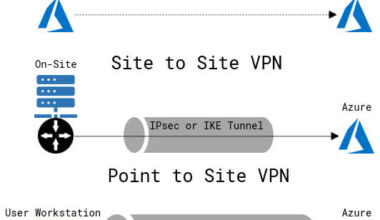An interpreter is a piece of software that transforms commands that instruct computers to carry out certain tasks from a programming language, a man-made language with precise grammar and syntax. For additional information on the advantages, disadvantages, types, and usage examples of interpreters, continue reading.
What Is an Interpreter
A sort of computer program known as an interpreter carries out commands expressed in a programming or coding language directly. It is not necessary to compile it into a program for machine learning. Many sorts of interpreters are created for a number of languages that are often used in compilation. An interpreter is a piece of software that doesn’t translate high-level instructions into machine code before executing them. There are two ways to run a program in programming. initially by compilation and subsequently by interpretation. Using a compiler is the usual method.
An interpreter is a program that can carry out several commands. Each command consists of the information needed to modify the data as well as the data that the programmer wants to change. Interpreters have a variety of instructions that are tailored for carrying out different activities. The most popular instructions for memory management, arithmetic computations, and branching are supported. Without first turning them into items or machine code, it performs scripted or programmed instructions directly.
Strategies of an Interpreter
There are three possible outcomes:
- Directly run the source code to generate the result.
- Execute the intermediate code created by converting the source code.
- generating pre-compiled code using an internal compiler. After that, run this precompiled code.
Work of an Interpreter
An interpreter converts high-level language coding into a machine-friendly or well-executable intermediate language. An interpreter reads every line of code and converts it into machine code before running it right away. During execution, the interpreter runs each source statement line by line. An interpreter facilitates interactive debugging and offers thorough error warnings.
Need for a Translator
An interpreter’s primary and most important function is to convert source code from high-level language to machine language. Fortunately, we already had a compiler that could be used for this; a high-level language compiler is a very effective instrument. The compiler does have several drawbacks, though. It may take hours to generate the source code if it is really large, which may considerably lengthen the compilation process. The Interpreter fulfills its function. Interpretation can shorten this lengthy compilation time. They can only translate a single command at a time, but they can promptly carry out that instruction. Therefore, the interpreter understands a single line and processes it rather than waiting for the complete code.
Advantages of an Interpreter
An interpreter has the advantages listed below:
- Interpreters allow programmers to run their code line by line and see the results right away, making interactive debugging possible. This facilitates quick error detection and code debugging.
- Usability: Interpreters often feature a straightforward interface that is simple to use, making them available to new programmers. Without being concerned about the difficulties of compilation and linking, programmers may run their code.
- The ability to run interpreted code on any system that supports the language’s interpreter is known as portability. This indicates that the same code can operate without modification on many operating systems and hardware setups.
- Faster development: Since programmers can test their code right away with interpreted languages, they can produce code more quickly. As a result, software initiatives have a quicker time to market and speedier development cycles.
- More thorough error messages: Because interpreters evaluate and run code one line at a time, they can generate more thorough error messages than compilers. This can make it easier for programmers to find and solve bugs.
- Examine coding courses.
Disadvantages with Interpreters
While interpreters provide many benefits, there are also some drawbacks, such as:
- Slower line-by-line translation and execution: Because interpreted code is converted and executed line-by-line, it might run more slowly than compiled code. Applications that need high performance should be concerned about this since it may lead to slower program performance.
- Security dangers: Because interpreted languages permit dynamic code execution, they may be more susceptible to security dangers like injection attacks. If the interpreter is not adequately guarded, this presents a security concern.
- Limited optimization: Because they are not given the chance to examine the complete codebase before execution, interpreters are not as capable of optimizing code as compilers are. This might lead to less effective code.
- Scalability Issues: Interpreters may be less scalable than compiled languages, especially in some cases. This is due to the possibility that interpreted languages need more resources than compiled languages when being executed.
- Higher memory consumption: Because they need more space to store the code, the interpreter, and the runtime environment, interpreted languages may consume more memory than compiled languages.
Types of Interpreter
The following list includes many interpretation specialties:
#1. Threaded Code Interpreters
Threaded interpreters use pointers, where each instruction is a word pointing to a function or set of instructions. The parameters are listed after this. They call the function they are pointing at after iterating over the instructions in a loop. Each set of instructions will conclude with a fetch before moving on to the next.
#2. Template Interpreter
This is a unique kind of interpreter that preserves a significant bytecode layout. The matching native machine instructions are directly mapped to it. These are to be stored as key-value pairs, or “templates,” on the host hardware. When a specific code segment is run, the template simply loads or jumps to an opcode mapping. It then runs straight on the hardware after that. Compared to other types of translators, it is substantially faster. This is due to the template’s straightforward architecture, which forwards calls directly to the hardware instead of implementing them.
#3. Abstract Syntax Tree Interpreters
Using these interpreters, the source code is converted into an efficient abstract syntax tree (AST), and the program is then run according to this structure. Every sentence in this case is processed at once. This enables the system to carry out the analysis during the runtime effectively. It maintains a global program structure and maintains the link between statements, unlike bytecode interpreters. They offer a more condensed representation when they are compacted.
#4. Bytecode Interpreter
It is a particular kind of interpreter that runs programs by first converting source code into bytecode, an intermediate and low-level representation. This interpreter is portable and available as a small binary file. It can be run more effectively than the original source code. In the runtime environment, bytecode is executed on a virtual machine via a bytecode interpreter. It offers an abstraction layer between the hardware’s underlying bytecode and
#5. Stack Based Interpreter
This interpreter simulates the hardware processor without the use of general-purpose registers. The byte-code instructions must use an operand stack to store temporary values. This interpreter organizes and carries out program instructions using the stack data structure. Since it reads source code line by line, operands are pushed into the stack and are in possession whenever an operation is to be carried out.
#6. Register-Based Interpreter
With the exception of the instruction set and the location of arguments, return values, local variables, and any temporary values, this interpreter is comparable to a stack-based interpreter. These interpreters, as opposed to stack-based interpreters, use virtual registers to store operands and interim outcomes. Faster execution speeds and excellent performance are the outcomes of this strategy.
Interpreter Example
Statement interpretation has been a consideration in the development of computer languages. Here are a few examples:
#1. Python
Developed in 1991, it is a highly well-known, free, object-oriented interpreted language. Additionally, it is modular, which allows for the addition of other components for use by others. On web servers, Python is utilized as the back-end processing language.
#2. Basic
The father of interpreted programming languages was created as a simple language to learn in 1963, about fifty years ago. Its interactivity, straightforward syntax, and code-checking as you type are its strong points.
#3. Java
The second variety of interpreters is this one. It converts source code into bytecode, which a virtual machine subsequently executes. For writing the business logic of a company’s business application, Java is a fairly common choice.
For instance, a Java server running on the website of a building society would likely be connected to an online mortgage application form that is processing all the intricate business rules necessary to provide a custom estimate.
What Does Programming Mean?
Giving machines a set of instructions outlining how a program should be executed is the process of programming. To properly create computer programs, programmers must spend their entire lives studying various programming languages and tools.
The application of logic to enable particular computing activities and capabilities is also referred to as programming. It can be found in one or more languages, each of which has a different programming paradigm, application, and domain.
Programming is a technological procedure for instructing a computer on what activities to carry out to address issues. In programming, people and computers work together to develop instructions for a computer to follow (code) in a language that computers can comprehend.
It also makes possible a great deal in our lives. Here are a few instances:
- Programming enables you to interact with the site’s on-page features, such as sign-up or purchase buttons, contact forms, and drop-down menus, as you visit a website to locate information, contact a service provider or purchase.
- You may easily order food, reserve a carpool service, measure your fitness, access media, and do other things thanks to the programming that goes into a smartphone app.
- Through various applications for file storage and automation, as well as solutions for video conferencing that connect people around the world, programming helps businesses run more efficiently.
- Programming is necessary for space exploration.
What Is the Difference Between a Compiler and an Interpreter?
A compiler examines a program in its entirety. A code interpreter reads only one line at a time. The compilers create intermediate machine codes. The Interpreters never produce any intermediate machine codes.
Which Is Better? Interpreter or Compiler?
The need determines how much better. Although the interpreter is quite helpful for debugging, execution is slow in general. Although a compiler checks the full source code, fixing problems might be challenging. Selection is solely based on the outcome.
Is Java an Interpreter or a Compiler?
Java’s source code is first compiled into binary bytecode, making it both a compiled and an interpreted language. The Java Virtual Machine (JVM), which is often a software-based interpreter, executes this byte code. Java is quite adaptable.
Which Is the Quickest? Interpreter or Compiler?
The interpreter is quicker than the compiler when the process is taken into account. However, once a program has been compiled, compiled programs execute more quickly than uncompiled ones during runtime.
Related Articles
- 21+ Best Jobs in 2023 that Pay $40 an Hour With and Without a Degree(
- SOFTWARE ENGINEER: Meaning, Duties, Salary, How to Become One & Tips
- WHAT IS COMPUTER PROGRAMMING: Examples, Types, Courses & Software






